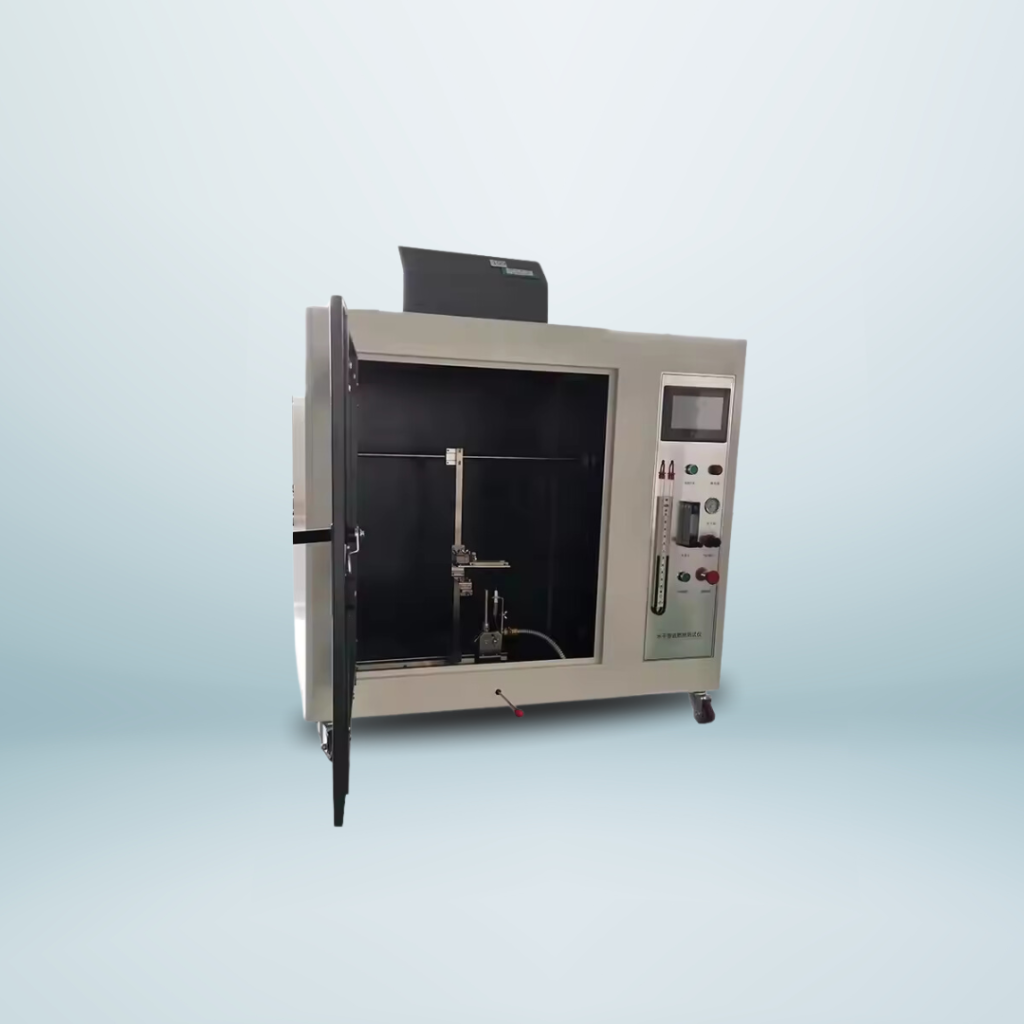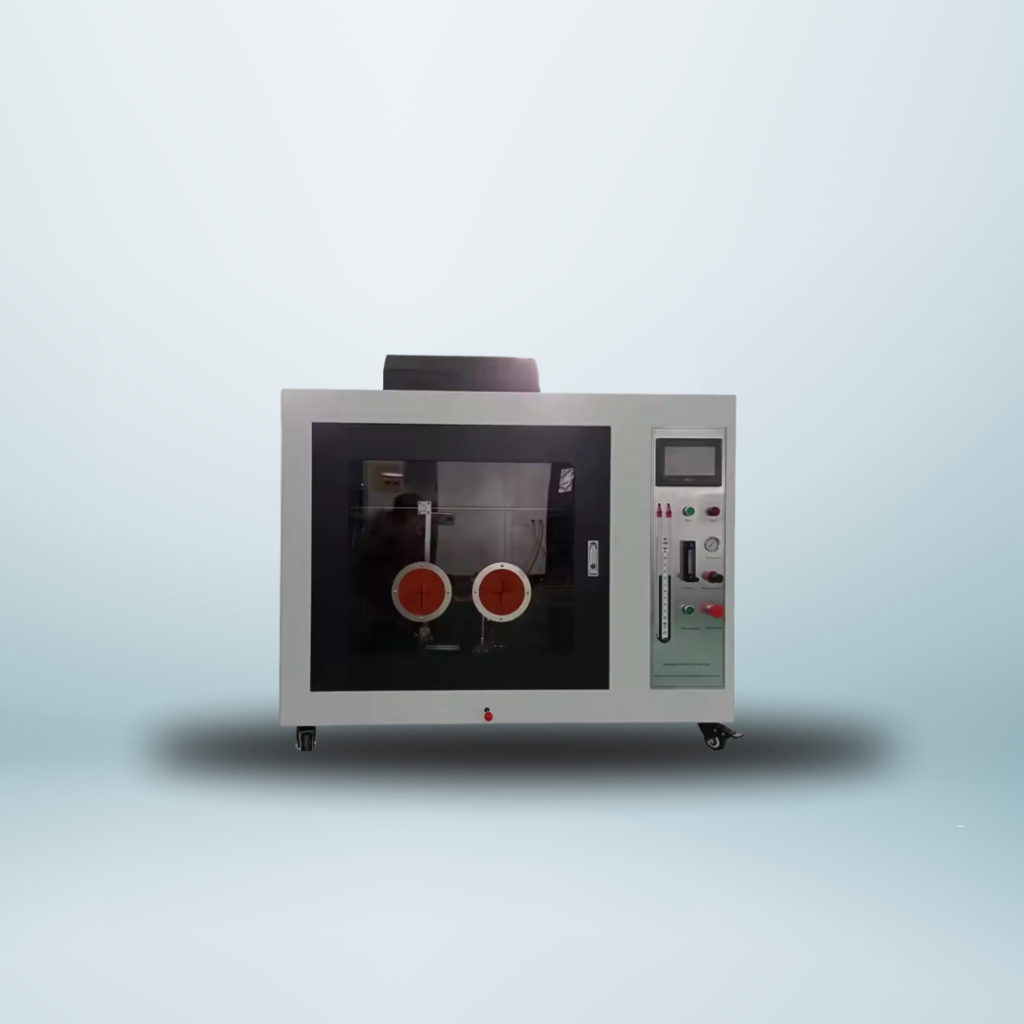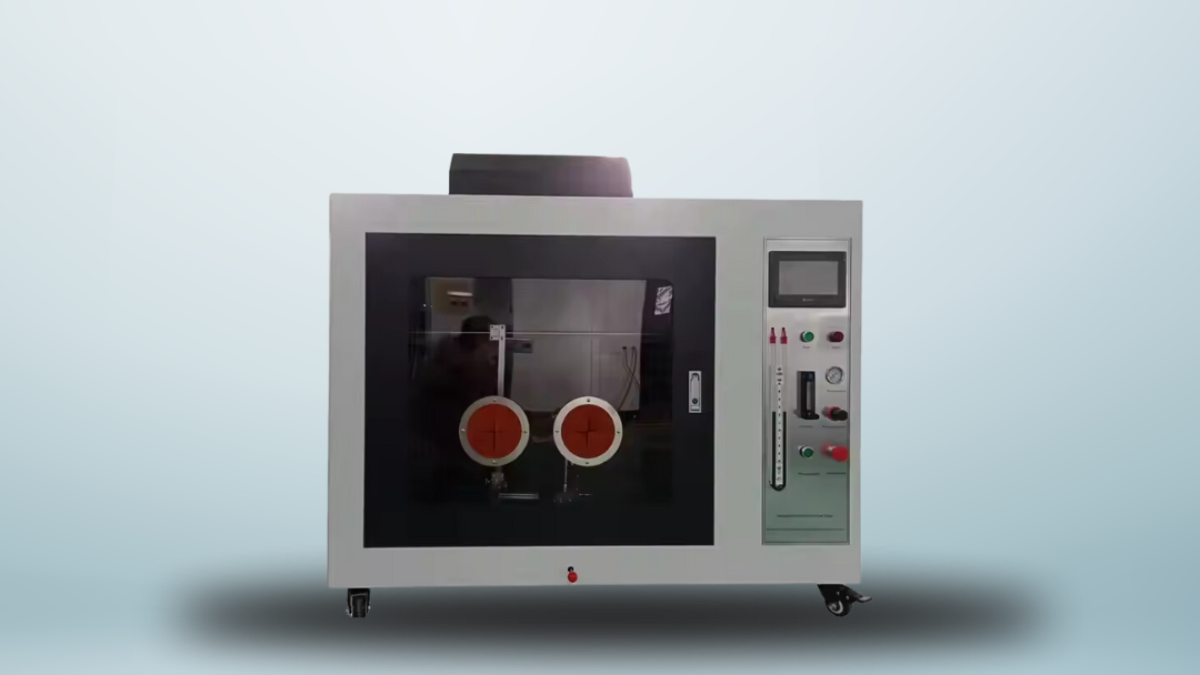Horizontal Flammability Testing As per standard UL 94 HB
Exploring Horizontal Flammability Testing (UL 94 HB) for Material Safety
Introduction
- Fire safety is a critical concern for manufacturers across various industries, especially when working with plastics and other flammable materials. One widely recognized standard to assess the flammability of materials is UL 94 HB, which tests the horizontal burning rate of plastic samples. This blog will explore the UL 94 HB test, its importance, and how it helps ensure the safety and compliance of products.

What is UL 94 HB?
UL 94 is a globally recognized standard for safety testing, developed by Underwriters Laboratories, to classify materials based on their flammability characteristics. The HB (Horizontal Burn) rating is part of this series, and it specifically measures the burning rate of materials positioned in a horizontal orientation. UL 94 HB is the most basic level of the UL 94 tests and is often used as an initial benchmark for determining the flame resistance of a material.
Why Horizontal Flammability Testing Matters
Materials, especially plastics, are widely used in applications such as electronics, automotive parts, and consumer goods, where fire resistance is crucial. A product that easily catches fire or spreads flames quickly poses significant safety hazards. Horizontal flammability testing provides a way to evaluate how materials behave when exposed to a flame, offering critical insights into their fire safety performance.
The Testing Process
Horizontal Flammability Testing as per UL 94 HB follows a well-defined protocol to ensure accuracy and repeatability:
- Sample Preparation: The material sample is cut into standard dimensions, typically 125 mm x 13 mm, with a thickness of no more than 13 mm. Samples are conditioned in a controlled environment before the test to ensure consistent results.
- Test Setup: The sample is mounted horizontally, and a flame is applied to one end for 30 seconds.
- Burn Rate Calculation: After the flame is removed, the time it takes for the flame to travel a set distance across the sample is recorded. The burning rate is then calculated in millimeters per minute.
Interpreting Results and Classification
Materials tested under UL 94 HB are classified based on their burning rate and behavior when exposed to flame. To pass, the material must meet the following conditions:
- For specimens less than 3 mm thick, the burning rate should be slower than 40 mm/min.
- For specimens 3 mm or thicker, the burning rate must be slower than 75 mm/min.
- The material must self-extinguish before burning a distance of 75 mm if it doesn’t meet the above criteria.
If the material meets these requirements, it earns the UL 94 HB classification, indicating that it has basic flame resistance suitable for lower-risk applications.
Applications of UL 94 HB
While the UL 94 HB classification is the most lenient flame resistance rating, it is suitable for products and materials that are not exposed to high-risk fire environments. These include:
- Consumer electronics: Plastic enclosures, casings, and internal components.
- Automotive parts: Interior trim, dashboard components, and other non-critical plastic parts.
- Household appliances: External plastic components for items such as fans, microwaves, and kitchen appliances.
Why UL 94 HB is Essential for Product Safety
Testing materials for flammability is crucial to preventing fire hazards in everyday products. UL 94 HB testing helps manufacturers assess the basic fire resistance of their materials, enabling them to select materials that meet the required safety standards for their intended application. This test is also a cost-effective way for manufacturers to ensure their products comply with regulations while minimizing risks.
- Consumer Confidence: Products that meet UL 94 HB standards demonstrate a commitment to safety, boosting consumer trust.
- Regulatory Compliance: Many industries require materials to meet specific flammability standards, and UL 94 HB ensures that these basic requirements are met.
- Enhanced Product Design: Knowing the flammability characteristics of materials allows engineers to design safer, more reliable products.

Conclusion
- UL 94 HB Horizontal Flammability Testing plays a pivotal role in material selection, product design, and ensuring regulatory compliance. While it represents the minimum fire resistance requirements, this test is invaluable for manufacturers seeking to produce safer products for the marketplace.

